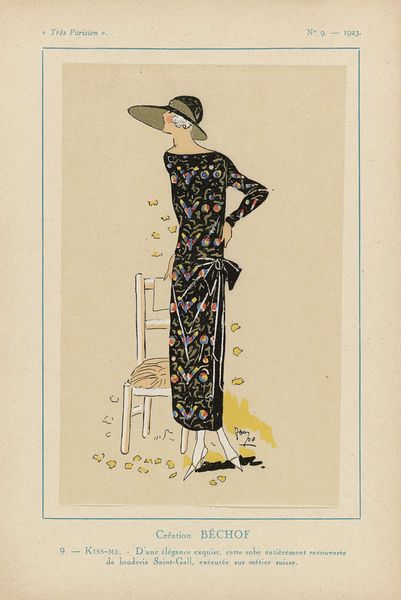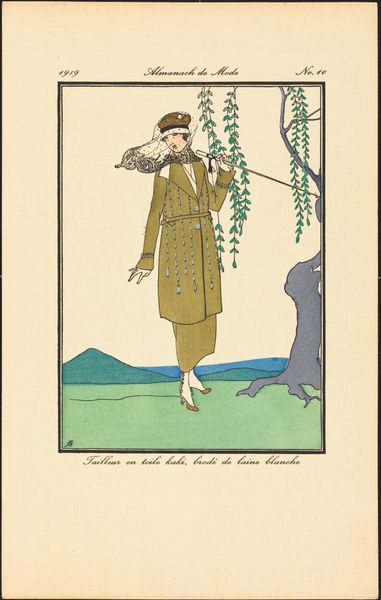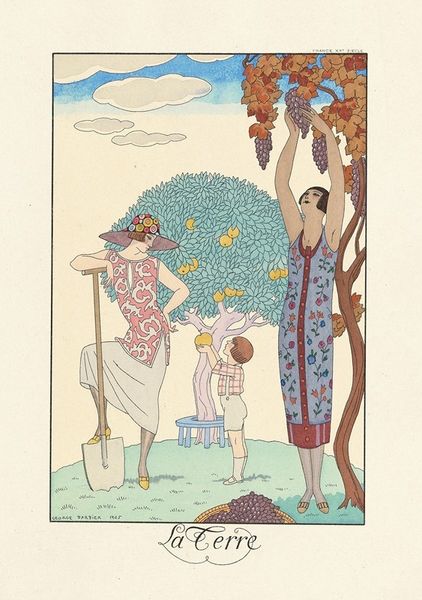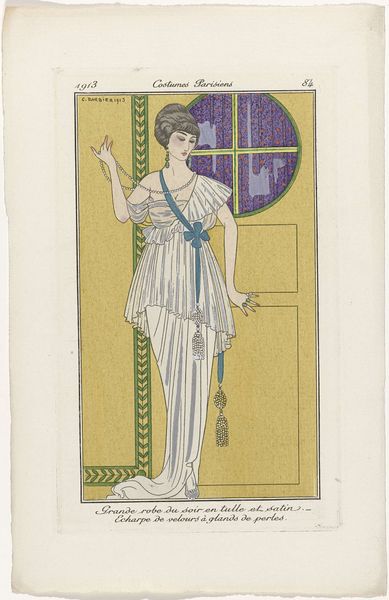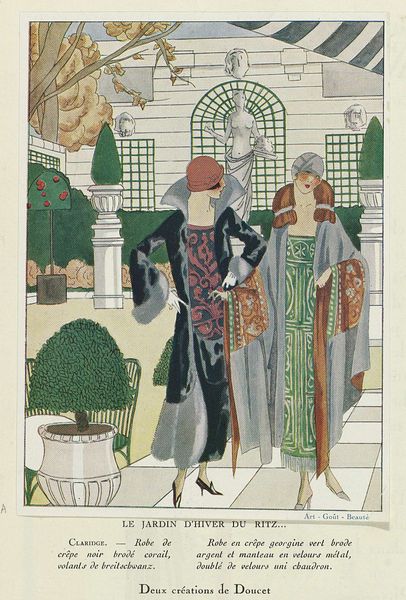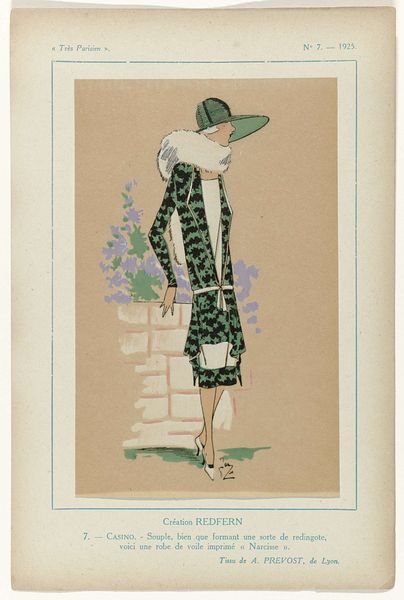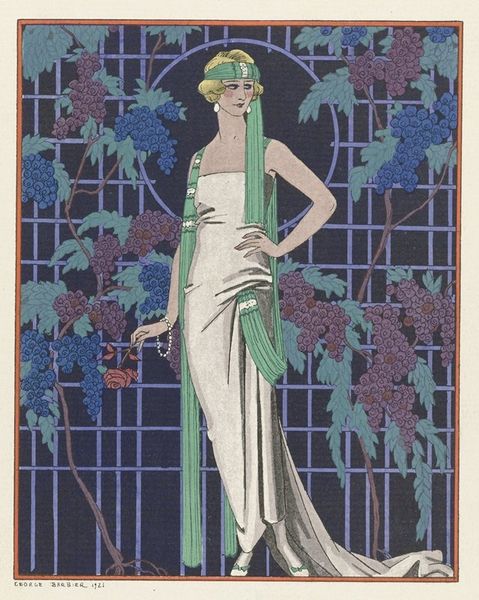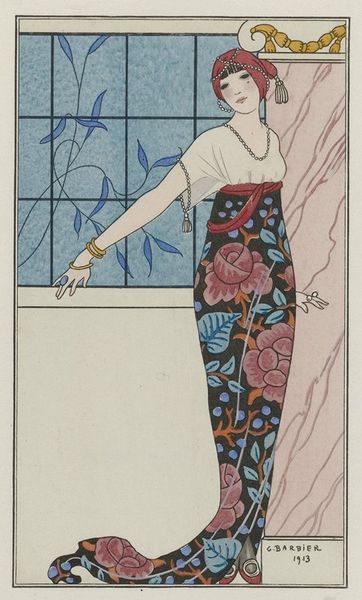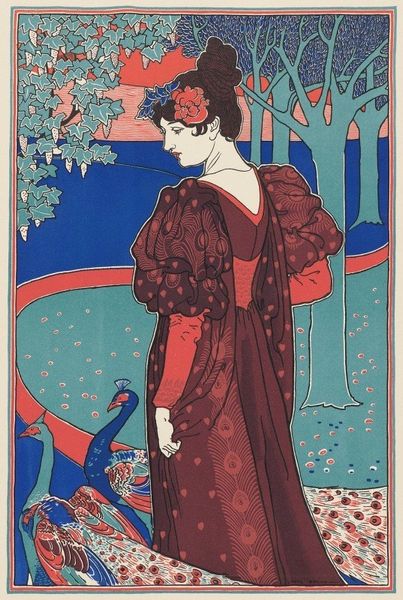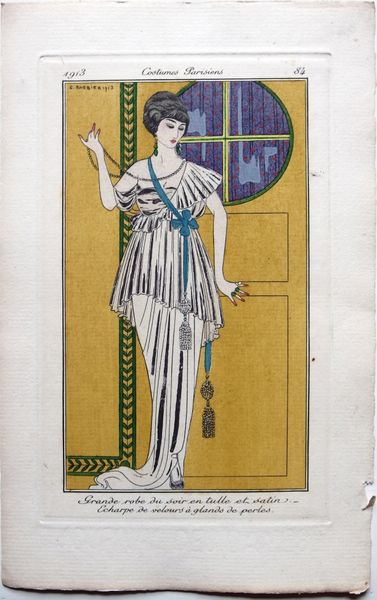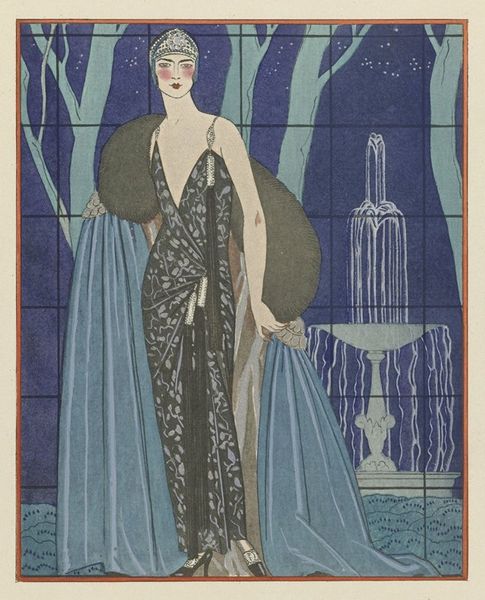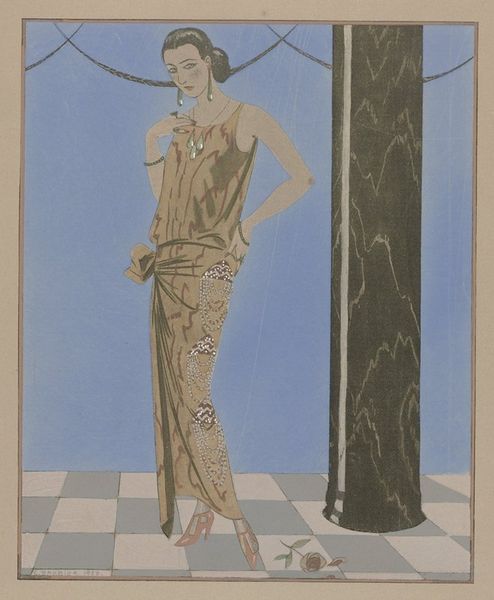
watercolor
#
portrait
#
art-deco
#
traditional media
#
landscape
#
caricature
#
watercolor
#
watercolour illustration
Copyright: Public Domain: Artvee
Curator: Looking at this piece by George Barbier from 1922, entitled "Amalfi. Robe, de Worth," one is struck by the elegant and sophisticated image that it evokes. The medium is watercolor. What's your first take? Editor: It's serene. That single color scheme, that ochre tone... it feels timeless, almost frozen in a moment of idyllic leisure. Like a memory from a dream vacation. Curator: Barbier was quite prolific during the Art Deco movement, providing illustrations for fashion magazines like *La Gazette du Bon Ton.* These weren’t just pretty pictures; they defined the aspirational lifestyle for the haute bourgeoisie in the interwar period. Editor: So it’s about more than just aesthetics; it's a cultural document showcasing the fashion industry’s influence on defining class and taste, specifically women’s aspirations, right? That yellow dress, it looks both extravagant and restrictive at the same time, conforming to then-contemporary beauty standards and highlighting fashion's capacity for reinforcing social expectations. Curator: Precisely. The Wertheims, who designed the robe, were part of this ecosystem. Worth's fashion house catered to royalty and the elite. The picture places women as consumers but also as signs of social standing and, to some extent, emancipation with its subtle expression of women's public presence. Editor: And you’ve got Amalfi as the backdrop. Not just any location. That whole landscape speaks volumes – the picturesque, controlled, almost staged natural beauty echoes the constructed femininity of the figure. Are we really seeing 'natural beauty' or just a perfectly designed commodity in both the figure and in the setting? Curator: Barbier's genius, I think, is presenting this manufactured reality with such elegance. The soft watercolor, the balanced composition, it all normalizes what, from today’s perspective, might feel artificial and overly mannered. Editor: The illustration does not only capture a style or a moment. It quietly broadcasts messages about the intersections of power, place, and the ever-changing role of women within a rapidly modernizing world. It leaves one wondering how we internalize those aesthetic norms that shape our identities. Curator: Well said. The image remains captivating, although viewing the fashion and its world with today’s critical eye shows its historical footprint clearly. Editor: Indeed. Even now, pieces like this help us think about what parts of ourselves, both past and present, we put on for show, and why.
Comments
No comments
Be the first to comment and join the conversation on the ultimate creative platform.
